
Piercing the veil
A new exhibition at Buxton Contemporary finds a rich complexity in the shadowy terrain between life and death.
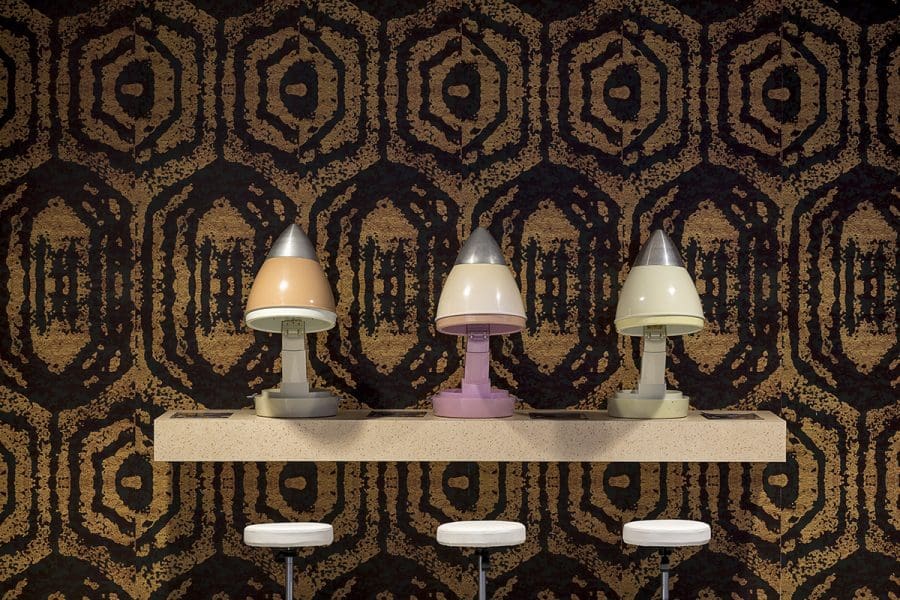
Lisa Reihana, Colour of Sin: Headcase Version, 2005, Formica, audio equipment, re-assembled Ralta hairdryers, brochure, wallpaper, stools, 170 x 230 x 80 cm, audio 22 mins. Collection: Govett-Brewster Art Gallery, New Zealand. Audio commissioned by Auckland Art Gallery for Tumatanui Tumataiti / Public Private Auckland Triennial, 2004. Installation view, Lisa Reihana | Cinemania, Campbelltown Arts Centre, 2018.
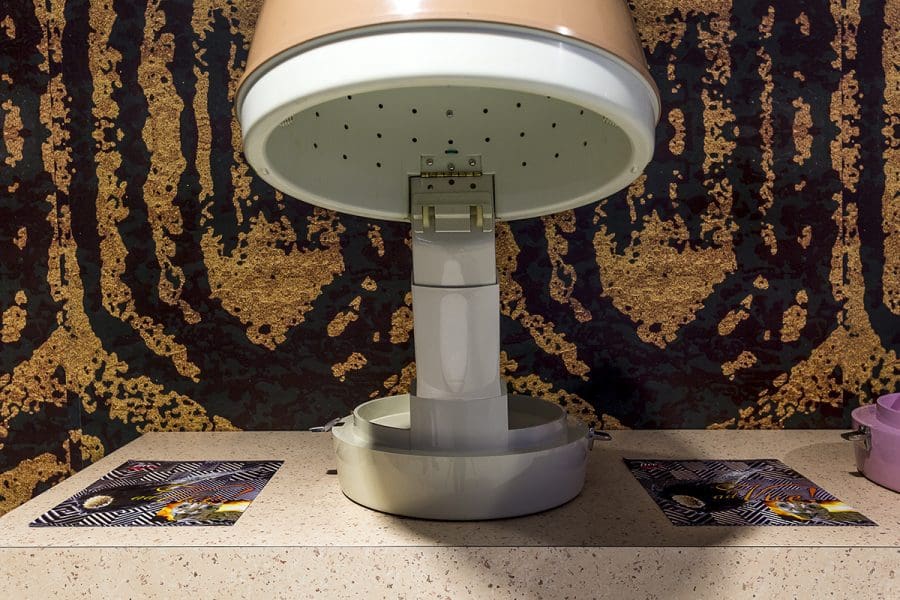
Lisa Reihana, Colour of Sin: Headcase Version (detail), 2005, Formica, audio equipment, re-assembled Ralta hairdryers, brochure, wallpaper, stools, 170 x 230 x 80 cm, audio 22 mins. Collection: Govett-Brewster Art Gallery, New Zealand. Audio commissioned by Auckland Art Gallery for Tumatanui Tumataiti / Public Private Auckland Triennial, 2004. Installation view, Lisa Reihana | Cinemania, Campbelltown Arts Centre, 2018.
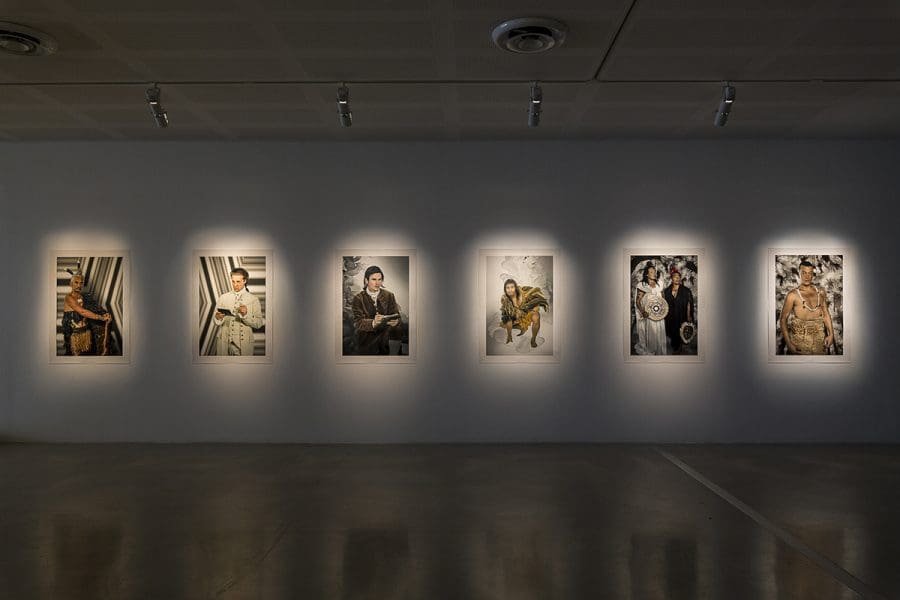
Lisa Reihana, Dramatis Personae, 2015, photographic prints on Lambda paper, 1260 x 900 mm. Installation view, Lisa Reihana | Cinemania, Campbelltown Arts Centre, 2018.
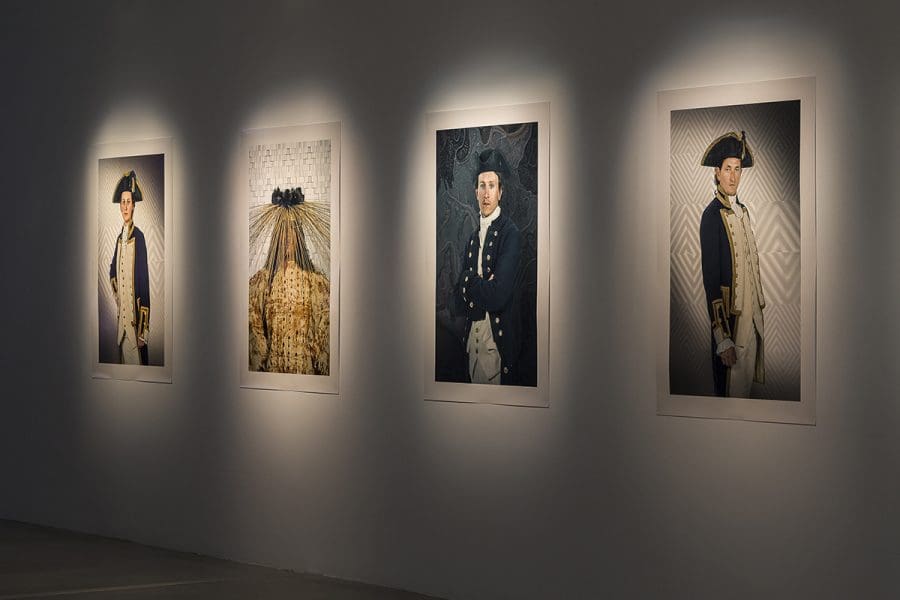
Lisa Reihana, Dramatis Personae, 2015, photographic prints on Lambda paper, 1260 x 900 mm. Installation view, Lisa Reihana | Cinemania, Campbelltown Arts Centre, 2018.

Lisa Reihana | Cinemania, installation view, Campbelltown Arts Centre, 2018.
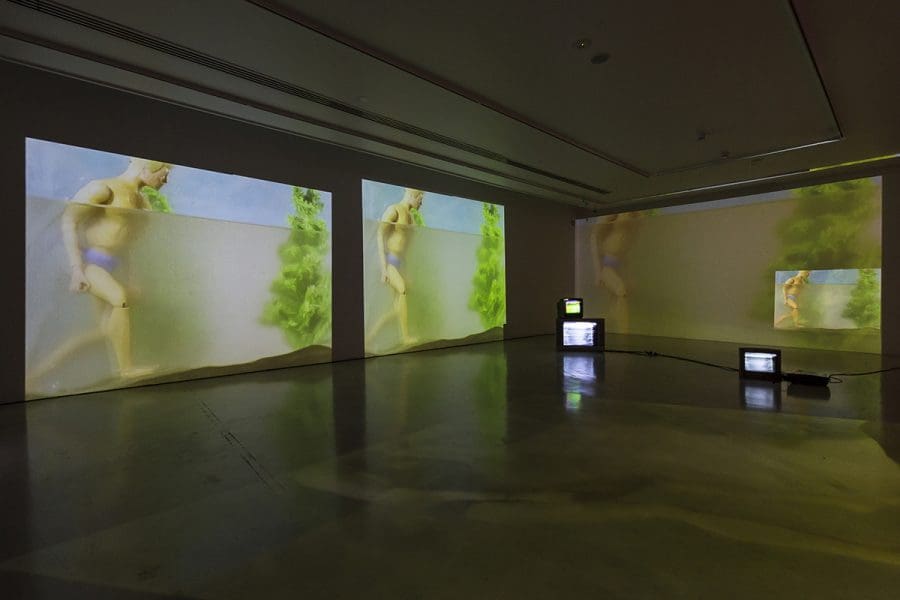
Lisa Reihana, Hair, 1992, single channel video, 16mm film transferred to Beta SP video, 4:3, colour, stereo sound, 46 mins. Installation view, Lisa Reihana | Cinemania, Campbelltown Arts Centre, 2018.
“The past is a foreign country: they do things differently there,” or so goes the oft-quoted first line of LP Hartley’s 1953 novel, The Go-Between. But when it comes to video art, the past is more like a galaxy far, far away. This is made abundantly clear in Cinemania, a survey show spanning three decades of video and photography by New Zealand artist Lisa Reihana.
Corralled together in a darkened room, they are projected and layered in different sizes on both the walls and floor while simultaneously playing on stacks of obsolete monitors, all screening slightly different colours and resolutions.
Despite the fact that this room is a successful solution to the ongoing challenge of making installations of monitors interesting, to my mind at least, the show could have excised the entire retrospective component: the two most recent videos, In Pursuit of Venus (Infected), 2015-2017, and Tai Whetuki – House of Death Redux, 2015-2016, are both incredibly powerful and could easily have stood alone.
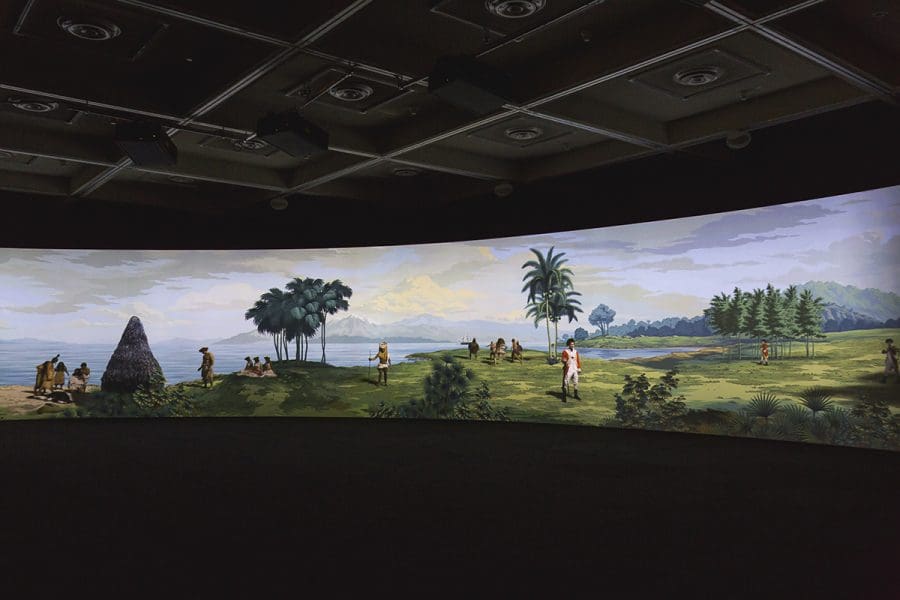
Having said that, what the inclusion of the older pieces did highlight, is that more than technology has changed in the last three decades. Like many artists, Reihana taps into the zeitgeist and her works reflect the fact that the prevailing mood seems to have shifted from one of bouncing optimism to something much, much bleaker. For example, even while taking on the serious issues of racial and gender stereotypes, her videos, Wog Features, 1988-1990, and Hair, 1992, are vibrant and buoyant (reminiscent of upbeat hip-hop crew De La Soul’s MTV clips of the same era) while her two most recent works are very dark indeed.
But instead Reihana has just captured the dark heart of the New Zealand bush. In this work the landscape is resplendently gothic, mysterious, liminal: a zone in which spirits and mortals negotiate. The two-channel video is sensitively installed in a room with a shiny black floor that mirrored the images, the ghostly reflections emphasised the eerie quality of the work.
Based on the famous 1804 French wallpaper, Les Sauvages de la Mer Pacifique, this video is a tour-de-force. In stark contrast to the original wallpaper that reduced the myriad peoples of the Pacific to passive decorative motifs, Reihana transformed them into live actors in a truly cinematic drama that ultimately goes horribly wrong. In her massive slowly moving panorama, idyllic scenes of cooperation give way to an escalating spiral of recriminations and retaliations between the invaders (led by James Cook) and the First Nations peoples. It hardly warrants a spoiler alert: this is history.

Lisa Reihana acknowledges both Mãori (Ngã Puhi, Ngãti Hine, Ngãi Tu) and British ancestry, and a critique of the ongoing toxic legacy of colonisation is a thread that runs in and out of her work across the decades. Cinemania reminds us that while video technology has improved, some things are stubbornly resistant to change – the past is not such a different place after all.
Lisa Reihana: Cinemania
Campbelltown Arts Centre
12 January – 29 March.